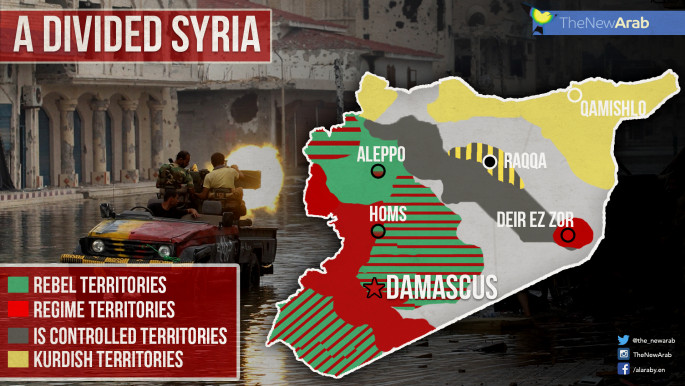Extremist fighting in Aleppo leading to all-out war
Analysts and opposition politicians have predicted the imminent collapse of a tense ceasefire agreement between Damascus and moderate rebel groups, with fighting between several factions continuing in Aleppo.
Syrian rebels are battling the Islamic State group, while al-Qaeda franchise the Nusra Front - which is exempt from the ceasefire - continues to fight pro-regime militias.
Planned attack
Regime troop movements and the rhetoric of officials suggested that Assad's troops and allies were planning a major offensive on opposition-held southern Damascus.
The regime's continued offensive on Eastern Ghouta and refusal to free political prisoners and end its starvation sieges on rebel territories have also been considered acts of war.
What is of greatest concern to most observers is the upsurge in fighting around southern Aleppo, which has seen 100 fighters from the regime, Nusra and rebel forces killed. Most have died in the past 24 hours of battle, the Syrian Observatory for Human Rights reported on Wednesday night.
Fighting broke out after regime troops attempted to take al-Eis which is held by Nusra fighters and allied rebel militias, AFP reported.
 |
| [click to enlarge] |
Nusra - in turn - launched an offensive on regime-held Khan Touman.
Much of the fighting has been centred on logistical roads into Aleppo but is also taking place close to two regime-held Shia villages - Fuaa and Kafraya - in rebel-held Idlib province.
Rami Abdel Rahman from the Syrian Observatory for Human Rights believes this fact highlights a sectarian religious motivation behind fighting between rival Shia and Sunni extremist groups.
"Most of the regime loyalists killed were militia fighters from Syria, Lebanon, Iraq, Iran and Afghanistan," Abdel Rahman told AFP.
"For them, this is an ideologically driven battle to break the siege on Fuaa and Kefraya."
Extremist takeover
The danger is that fighting between these two extremist poles could spread to more moderate forces, while opposition groups and the Assad regime meet in Switzerland for peace talks.
For many in the rebel camp, the situation is reminiscent of the Geneva meeting in February, ahead of which the regime launched a surprise Russian-backed offensive in Aleppo during discussions on a ceasefire.
The US and France have both said fighting is intensifying in the northern province, and warned that if the Assad regime launches another offensive it will be "held accountable".
Meanwhile, regime planes have carried out "unprecedented" air raids on rebel-held eastern Aleppo districts, stoking fears that a land offensive is in the offing.
The opposition said that the United Nations is doing little to address the problem and the relative peace some Syrians are enjoying is close to crumbling.
"By keeping silent over the regime's ramping up of its forces around Aleppo, the international community risks appearing indifferent and not showing the slightest consideration to the political solution of the 'cessation of hostilities' agreement, which cannot hold any further," said Muwaffaq Nyrabiya, vice-president of the Syrian Coalition.
Yet some analysts maintain the future of the country no longer lies in the hands of Syrians.
"The real decisions are made by Iran and Russia on one side, and jihadist factions and opposition backers on the other," Abdel Rahman told AFP.





 Follow the Middle East's top stories in English at The New Arab on Google News
Follow the Middle East's top stories in English at The New Arab on Google News


